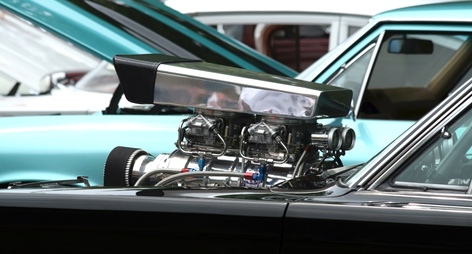
The performance gains to be made in balancing your engine are many. Reciprocating or rotating parts, such as rods, pistons and crankshafts, all have different weights and centers of gravity. Any one of them that is worn, chipped, under or overweight, during extended engine running, can throw the other parts out of rotational cycle and cause shimmy, increased engine wear, bearing failure, excess heat and bad fuel economy. Balancing improves engine horsepower, promotes smooth operation, provides better cooling and gives extra life to all the engine components.
Remove the pistons, piston rings, rod bearings, connecting rods (upper and lower ends) and bearings, and piston pins (keep them together in their own cylinder set). Place individual piston sets on a sheet of cardboard. Using a felt pen, mark the cylinder number on the cardboard that corresponds to each set. Clean each individual part with solvent, removing all carbon, grime and soot. Then put the parts back down in their respective places on the cardboard.

Use a gram scale to weigh all of the pistons. Mark the lightest one of the lot. You'll want to match the weight of the other pistons with the lightest one. Remove small bits of metal on each heavier piston by drilling tiny holes gently into the underside of the boss, alternating between both sides. Take the gram weight down to match. Take your time with this process.
Remove weight from the connecting rods by gently shaving their sides at the thick, lower neck with a small file, alternating from side to side equally. Get them all under a gram in difference if possible. Perform the same weight-matching with the small connecting rod ends. Shave any excess from the top of the connecting rod end as close to the middle as possible. Weigh the rod-bearing caps and remove any weight, as needed, for each. Take out the excess from the middle area on top of the cap.

Install the rings on the pistons, replace the piston pin, connect the upper part of the rod to the pin and fasten the lower rod-bearing cap together. You now have a one-piece assembly, including the nuts and bolts. At this point, you can weigh each assembled piston set and match them up. They should be very close, but you can make minor adjustments by removing any excess weight from the underside of the piston boss again.
Pack the piston assemblies in a box, ready for transport to a machine shop. Take the crankshaft, flywheel and harmonic balancer. You may choose to take the clutch pressure plate as well. Some mechanics think it's important while others don't believe it adds any noticeable change. A machinist will place your crankshaft in a special balancing machine, with the harmonic balancer and flywheel attached. The full weight of the piston assemblies will be added with "bobweights," which simulate the weight load. Then the crankshaft will be spun. Computer-controlled sensors will detect any out-of-round condition. The machinist will add weight to the crankshaft or remove it to put it in perfect rotational balance.